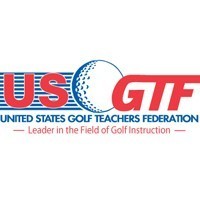By Mark Harman, USGTF Course Director
Last month, I wrote about my dilemma on how honest I should be with a student while at the same time not destroying their enjoyment and aspirations for their games. I asked my fellow members to weigh in on how they handled such situations, and a good number of you replied. Here are some of the responses:
Joe DeLorenzo wrote, “First, we must clarify expectations; improvements are not likely to happen overnight. Instructors can only provide information for improvements, provided the student is willing to put in the work. Goals must be staircased, so measure gradual improvements over time. If the high-level goal is to improve scores, start with baselines for each course the student will play, and try to break the personal best, but this comes after the following measurements: Lower-level examples of goals to measure might be reducing the number of three-putts per round, the success rates of ‘up-and-downs,’ fairways hit vs. missed, greens hit vs. missed, number of mechanical errors, number of mental errors, etc. Instruction should target the problem areas first.”
Mike Dugan wrote, “The main thing I do with older golfers that are trying to get more distance is put impact tape on their clubface and make sure they’re somewhat in the center of the clubface with their driver. If they’re way off the toe or way off the heel and I can get them more centered, that usually gets them 10 more yards.”
My good friend John Linton wrote, “In this case we need to be honest with the person, just remember it will burst his bubble, and we should NEVER DULL A MAN’S DREAMS. So we have to learn how to step on a man’s foot without messing up his shoe shine. I believe I would try to tell him what is needed for him to accomplish his goals and point out where he falls short. Next, I would try to help him look at his situation realistically and show him what he needs to get to there. In the end, the truth will set you free.”
Finally, Robert Vitti wrote, “Whether the student understands his strengths and limitations or not, it is the teacher’s job to make clear and actively manage expectations. It is also wise to set small, more attainable goals that support mutual expectations. A student normally responds more positively when he realizes a small improvement on the way to his goal, especially if they feel they are attaining realistic goals along the way. It is also wise to re-visit expectations on a regular basis to ensure that you are both working toward the same end. This should always be a positive discussion, even if the expectations are being tapped back from time to time.”
Great thoughts. Due to space constraints, I couldn’t print all responses, but I want to thank everyone who wrote.
Copyright © 2023 United States Golf Teachers Federation, All Rights Reserved
200 S. Indian River Drive, Suite #206, Fort Pierce, FL 34950
772-88-USGTF or 772-595-6490 - www.usgtf.com
200 S. Indian River Drive, Suite #206, Fort Pierce, FL 34950
772-88-USGTF or 772-595-6490 - www.usgtf.com

